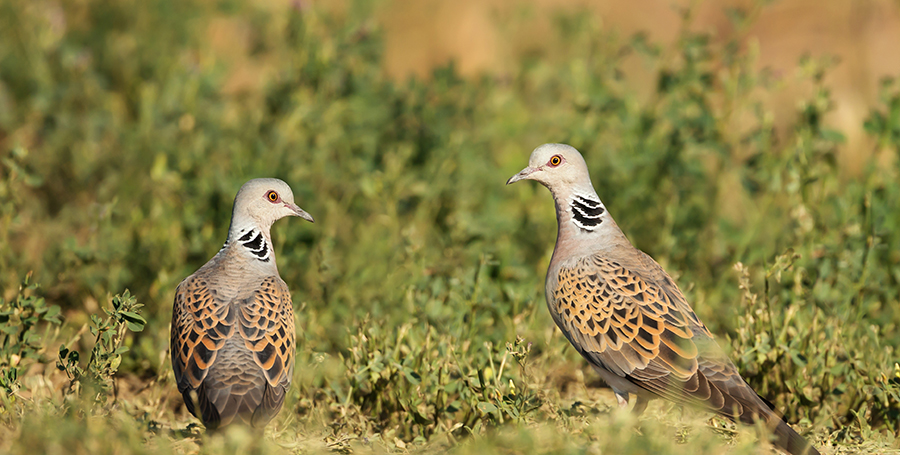
24 May 2024 Hunters’ Role in Turtle Dove Conservation Highlighted in New Scientific Paper
The conservation work that European hunters are carrying out in favor of habitats and bird species is increasingly recognized by the scientific community. The Journal of Nature Conservation recently published the article “Habitat management carried out by hunters in the European turtle dove western flyway: Opportunities and pitfalls for linking with sustainable hunting,” with Carlos Sánchez-Garcia, the research director of the Artemisan Foundation, as the lead author. In a statement to FACE, Carlos Sánchez-Garcia highlighted the key findings of this paper for future policymaking related to the Turtle dove (Streptopelia turtur) hunting and conservation, stating: “although the contribution of hunters to habitat conservation in Europe was already known, this is a major scientific contribution which shows in detail the efforts conducted in the hunting grounds of France, Spain, and Portugal, together with the need for more support to provide the right habitat at a larger scale.”
This was based on a survey conducted in the three main countries of the western flyway: Portugal, Spain, and France. The survey aimed to describe and quantify the measures applied in hunting grounds that favor the Turtle dove, understand where the Turtle dove is a target species for management, and identify the motivation and obstacles in implementing management measures targeting the Turtle dove.
The authors received 931 survey responses, representing 7% of the area under hunting regulation in Portugal, 2.3% in Spain, and 56.5% in France, with responses from France coming from departmental administration level.
Despite the species being under a moratorium in these countries, half of the surveyed hunting grounds indicated the Turtle dove as a target species for their game management. Notably, 98% of respondents from Portugal and Spain provided water during the summer, and 84% of the total hunting grounds supplied food. Additionally, 50% of respondents managed woodlands, and 47% implemented agricultural management measures, crucial for the Turtle dove as it thrives in the ecotone between woodland and farmland habitats.
In addition, 58% of respondents mentioned that more management measures focused on the Turtle dove could be implemented. The main barriers preventing more measures by hunters were funding, as hunters and game managers self-funded the management conducted in most cases, and land use governance, because land-management decisions belong to the landowner, and it is not always possible for hunters to take part in such decisions.
The article highlights that a significant proportion of hunting grounds conduct management measures which may benefit the Turtle dove during the breeding season in Europe, although not being exclusively targeting the species. For example, management for small game species such as providing feeding (field margins, crops for wildlife, etc.) and nesting (shrubs and forest management) habitats or supplementary grain and water for partridges, or management practices targeting rabbits and hares or wild pheasants which often include the implementation of cover crops, field margins, and hedgerow management. Even management targeting big game in Spain such as the red deer and roe deer includes forest and crop management which improves wild seed availability for the Turtle dove. A large range and diversity of habitat management are implemented by hunters and have a positive impact on the conservation and recovery of the Turtle dove.
In conclusion, this article provides further evidence about the crucial role that European hunters play in wildlife conservation by conducting habitat management and investing large resources to improve habitats, at their own cost. In view of the current serious concern about habitat quality in the EU, demonstrated by the latest EU State of Nature report, and the emphasis on the need for habitat restoration (e.g., the EU Nature Restoration Law), it is clear that hunters are key actors contributing towards achieving EU’s biodiversity and conservation objectives, including the recovery of the Turtle dove.
Together with Fundación Artemisan, the following organizations have conducted this study: Instituto de Investigación en Recursos Cinegéticos (IREC, Spain), Office Française de la Biodiversité (France), Universidade de Lisboa (Portugal), Fédération Départementale des Chasseurs du Doubs (France), and the Centre de Ciència i Tecnologia Forestal de Catalunya (Spain). This research was funded by the European Commission (ENV.D.3/SER/2019/2021).
Link to the article: ScienceDirect

